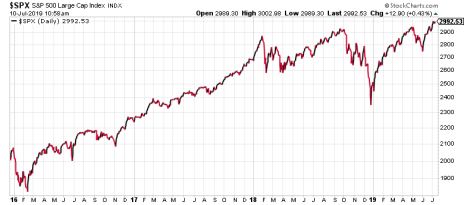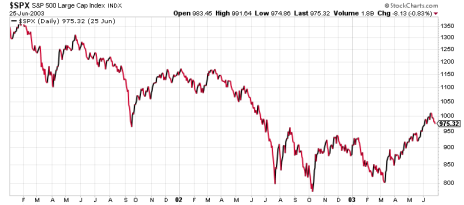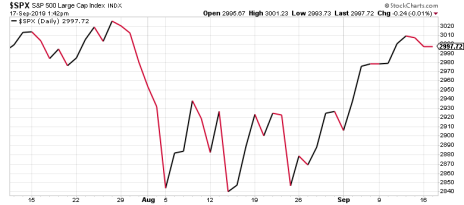The Fed Appears Primed to Slash Interest Rates Again. The Charts Say They Shouldn’t.
If President Trump gets his way, the Federal Reserve will slash interest rates again today. If it happens - and economists fully expect that they will - stocks may rally in the coming days. Like the July rate cut, it also likely won’t last, nor should it. History shows that rate cuts are bad for stocks.
That should not be a surprise. In fact, it should be rather obvious: When the Federal Reserve cuts interest rates, it’s always due to economic sluggishness or “uncertainties.” In the long term, an uncertain economy is bad for the stock market.
Prior to July, the last time the Fed cut the federal funds rate was September 2007, when U.S. home prices fell, the first major leak before the subprime mortgage crisis dam broke, plunging the U.S. into its worst recession since the Great Depression.
[text_ad]
How did Wall Street respond to that rate cut, from 5.25% to 4.75%? Favorably—the S&P 500 ticked up 2.4% in the three weeks that followed the rate cut, closing at new all-time highs above 1,560 on October 10. But we all know what happened next.
Let me refresh your memory with this 18-month chart, starting in October 2007:
During that time, the Fed slashed short-term interest rates to near zero, where they remained for seven years.
And what happened to stocks in the three and a half years between when the Fed started raising rates again, in December 2015, and this July?
This:
If you’re scoring at home, that’s a 46.5% gain. That’s slightly less than the 53% gain in the three and a half years that preceded it, when the Fed held interest rates at zero. But remember that stocks were still digging out of the 2008-2009 market crash then; they didn’t get back to pre-recession levels until March 2013.
Want more proof that rate cuts are bad for stocks? Let’s go back to the previous time the Fed starting trimming them. It was January 2001, when the unemployment rate was at 6% and U.S. GDP growth was a mere 1%. Over the ensuing two and a half years, the Fed cut interest rates another 12 times, slashing the federal funds rate from 6.5% to 1% during that time.
Here’s how stocks behaved during those two and a half years of rate cuts:
Again, that’s not a good chart. That’s a 27.5% decline, a bona fide bear market.
So, the previous two times the Fed started reducing interest rates in the 21st century, two things have happened: they kept reducing rates until they were close to zero, and a long bear market ensued.
Are investors hoping the third time will be the charm? Are they clinging to the 1998 rate cuts, when the Fed slashed rates just three times (from 5.5% to 4.75%) and stocks continued to climb higher nonetheless? (Of course the dot-com bubble soon burst, squashing the rally and precipitating the 2001-2003 rate cuts and bear market I just mentioned.)
I doubt it. More likely, investors are focused solely on the short term. And when interest rates are cut, stocks do tend to perform just fine … for a month or so. But the real key after that isn’t the rate cuts, but the economy—if things really worsen and the uncertainties crimp earnings, the bears often have their way. But if the rate cuts do engineer a so-called soft landing, the market can do quite well.
I’m not saying you should start selling stocks based on what Chairman Jerome Powell says today. But you shouldn’t view the current rate cuts as a guarantee of higher share prices. In fact, here’s a bonus chart of the two-plus months since this year’s first rate hike:
Stocks have gone literally nowhere since. I don’t think lowering the rates again will help matters much.
[author_ad]





